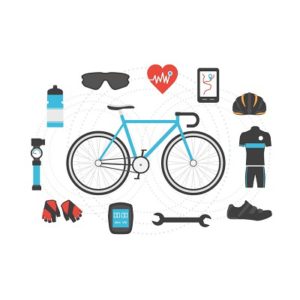 Every mechanical item needs maintenance. Your air conditioner, your car, and your bike. You may think that your bike doesn’t need much. In fact, there is a misconception that your bike only needs some oil on the chain and some light cleaning to keep it going.
Every mechanical item needs maintenance. Your air conditioner, your car, and your bike. You may think that your bike doesn’t need much. In fact, there is a misconception that your bike only needs some oil on the chain and some light cleaning to keep it going.
The truth is, there are several aspects of maintaining a bike that every bike owner should know. Here are a few tips to help if you are new to bike riding, owning, and incorporating a bike in your lifestyle routine.
Use Proper Lube
You will need to lube your bike chain, wheels, gears, and your pedals. You may think that you can use a standard lube. You can, but it may not be as beneficial for your bike. Try to find a bike lube that is specific for cycles and for all weather locations. This will likely last longer and lube your bike in a more efficient way.
Also, consider using a dropper rather than a spray. The spray can get in areas you do not want and you can’t control the amount of lube as well as you can with a dropper style lubricant.
Use Correct Tools
Though you can use regular tools, they are not always fit for proper maintenance on your bike. Make sure you are using a tool kit that is not only specific for cycles, but is specific for your style of cycle. You can find kits for mountain bikes, road bikes, hybrids, and more. These special kits come equipped with extra tools that are specific to your bike as well as the tools you can use on any cycle.
Don’t Let It Dry
You may think that letting mud dry on the bike is a good idea and it will just chip off or come off easily. This is far from the truth. The same can be said of letting rain or snow dry. If you get your bike caked in various areas of your bike, clean it as soon as possible. Letting it dry can cause rust, build-up in areas, and can cause clogs and problems with the gears.
Set a Specific Schedule and Log
After you have the right tools and maintenance accessories, you need to set a specific schedule and log. The schedule should be set according to how often your ride. If it is once a week, then monthly will do. If it is more often than weekly may be ideal. If it is daily on long rides, then daily would be ideal.
Log your maintenance and any issues you saw. This can correspond to the trails you ride and help you to determine if you need to do something to your bike, change your path to avoid issues with your bike, or if there are other issues.
By keeping these tips in mind, you can help to expand the longevity of your bike, reduce the cost of replacement parts, and get a feel for when your bike needs assistance.






